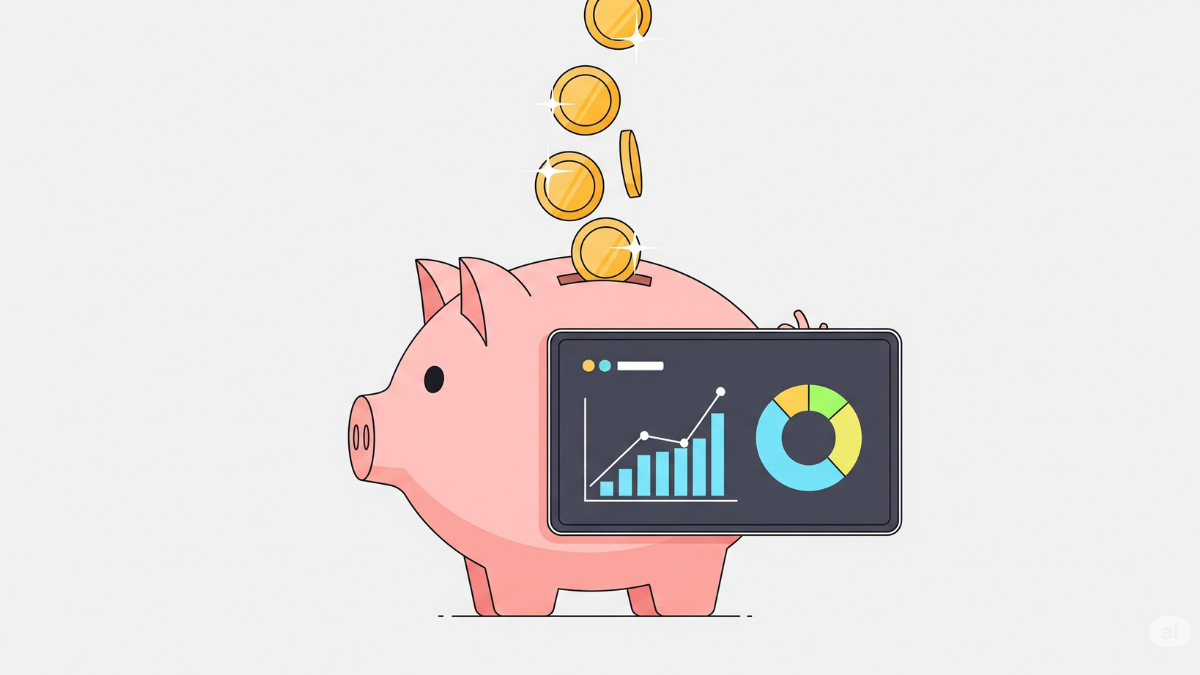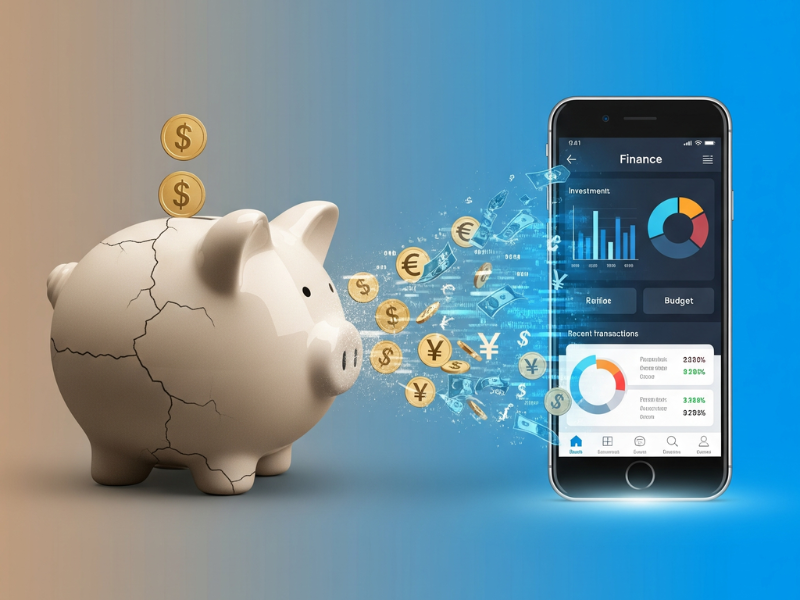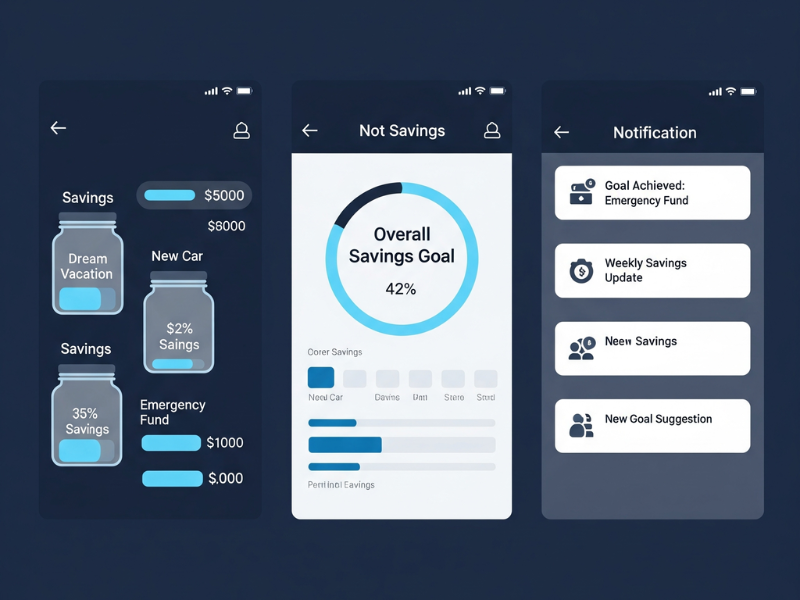Physical Address
304 North Cardinal St.
Dorchester Center, MA 02124
Physical Address
304 North Cardinal St.
Dorchester Center, MA 02124

“Don’t save what is left after spending, but spend what is left after saving.” Warren Buffet’s words are timeless, but let’s be honest, actually sticking to savings goals isn’t always easy. That’s where piggy tracking comes in. Piggy tracking is a simple yet powerful way to monitor how much you’re saving and keep your goals in sight. Instead of letting your money drift away, piggy tracking keeps you accountable, motivated, and maybe even a little competitive with yourself. In this guide, I’ll walk you through what piggy tracking means, why it matters in today’s digital world, and the best strategies to make it work for you.

When I first heard the phrase piggy tracking, my mind went straight to those little ceramic pigs we used to drop coins into as kids. Mine was pink and chipped on the ear, and I’ll admit, I was guilty of sneaking money out with a butter knife more than once. The concept today is a little more grown-up, but the idea is the same: saving small amounts over time and watching them build into something meaningful.
Piggy tracking is simply the practice of monitoring your savings goals in a way that’s visual and easy to follow. Instead of just saying, “I’ll save what I can this month,” you’re assigning your money to goals and keeping track of every step. Think of it like a scoreboard for your financial life.
Piggy tracking is all about clarity. Its purpose is to help you see, at a glance, where your savings are going and how close you are to reaching your target. The beauty of it is that you don’t have to be a finance whiz to use it. Some people track with apps, others with spreadsheets, and a few still do it the old-school way with jars or envelopes.
What I love about piggy tracking is that it makes saving feel intentional instead of accidental. It’s no longer about hoping you’ll have something left at the end of the month. Instead, you’re setting money aside on purpose and actually seeing the results.
When I first tried piggy tracking, I set a goal to save for a weekend trip. Each week, I marked progress in a simple chart I drew on paper. Watching that line climb felt so satisfying, it almost gamified the whole process. And because I could see the gap between where I was and where I wanted to be, I stayed motivated instead of giving up halfway.
Piggy tracking and budgeting go hand in hand. A budget tells you how much money you should be saving, but piggy tracking tells you whether you’re actually doing it. Without tracking, it’s easy for money to slip through the cracks.
Say your budget allocates $200 a month for savings. If you don’t track it, you might assume you’re hitting the mark when, in reality, you’re only saving $75 because of impulse buys or unexpected bills. Piggy tracking makes sure that disconnect doesn’t happen.
Try connecting your budget categories directly to piggy tracking. For instance, if your budget has “Vacation Fund,” track that separately instead of lumping it into one big “Savings” number. Breaking it down into smaller goals feels way less overwhelming.
The old piggy banks served their purpose, but they had limits, once the coins went in, they stayed there until you physically broke it open or shook it upside down. Today, we’ve got digital piggy banks in the form of apps and tools. They not only hold your money but also show progress bars, send reminders, and even automate deposits.
It’s kind of wild when you think about it. My grandmother saved in coffee tins, I saved in a ceramic pig, and now people are saving through apps that round up spare change from every purchase. The principle hasn’t changed, it’s still about small amounts adding up over time, but the way we track it has become smarter and more interactive.
I’ll be honest, I still keep a small jar at home where I toss loose coins because I like the physical reminder. But when it comes to bigger goals, the apps win every time. They give me notifications, progress updates, and even little “congratulations” messages that make saving feel like winning a game. And who doesn’t like that?
I used to think saving money was all about discipline, like if I just forced myself hard enough, I’d magically stay on track. Spoiler: that never worked. What changed things for me was piggy tracking, because it tapped into psychology more than willpower. The reason it works is simple, when you can actually see progress, you’re way more likely to stick with it.
Piggy tracking gives you something a budget alone doesn’t, accountability. It’s like having a mirror for your savings. When you log into an app and see you’ve only hit 10% of your goal halfway through the month, it’s a wake-up call.
I remember setting a $1,000 emergency fund goal. By the third month, I was only at $150. Normally I would’ve shrugged it off, but seeing that tiny bar stuck at 15% lit a fire under me. I cut back on takeout, moved some extra cash over, and suddenly that progress bar jumped. That little boost of “hey, it’s working” kept me consistent.
Saving money often feels like this huge, endless mountain to climb. Piggy tracking breaks it into smaller hikes. Every milestone feels like a mini-win.
Set milestones within your goal. For example, if you’re aiming for $500, celebrate when you hit $100, $250, and $400. It doesn’t have to be a big celebration, even a simple “nice job” note to yourself works. Those little pats on the back matter more than you think.
When I tracked for a new laptop, I set milestones every $200. Each time I hit one, I treated myself to a small but cheap reward, like a fancy coffee. It felt good to acknowledge the progress without blowing my savings. That kept me motivated all the way to the finish line.
There’s real psychology behind piggy tracking. Our brains love visuals, rewards, and games. That’s why so many apps add progress bars, streaks, or even confetti animations when you hit a target. It tricks your brain into enjoying saving instead of dreading it.
I’ll admit, the first time my app shot off digital fireworks when I hit a savings milestone, I laughed out loud. But you know what? It worked. I wanted to see those fireworks again, so I kept adding money. Silly, right? But that’s the whole point, gamifying something boring like saving makes it stick.
Piggy tracking works not because you suddenly become more disciplined, but because it uses small wins, accountability, and even fun to rewire how you think about money. It shifts saving from “ugh, I have to” into “cool, I want to see my progress.” And that mindset change is everything.
Back in the day, piggy banks were simple, drop in your coins, and that was it. Now we’ve got an entire lineup of digital tools designed to help us save smarter. The trick is finding the one that actually matches your habits. Some apps gamify the process, some automate it, and others are more about tracking the numbers. In 2025, there’s something for every personality type.

There are a few standouts I’ve personally tried or seen friends rave about.
PiggyVest is especially popular if you want an all-in-one savings and investment tool. It lets you lock away money for a set period (almost like a digital fixed deposit), and the best part? You can’t touch it until the date you chose. That feature alone kept me from raiding my savings more than once.
Qapital is all about making saving automatic and fun. You set “rules” like rounding up every purchase to the nearest dollar, and the extra goes straight into savings. It feels like money disappears without you missing it. I once saved over $150 in a few months just from rounding up coffee runs.
YNAB isn’t strictly a piggy tracker, but it’s brilliant for people who want total control over where their money goes. It forces you to assign every dollar a “job,” which means savings aren’t optional, they’re baked into your plan. The learning curve is steep, but if you love spreadsheets, this might be your thing.
No tool is perfect, so it helps to weigh the good against the not-so-great.
Not every tool fits everyone. The best choice depends on your personality and money habits.
When I first started experimenting, I downloaded way too many apps and confused myself. My advice? Start with just one. Give it at least a month, track how it feels, and then decide if it’s worth sticking to. Piggy tracking should make saving easier, not give you another thing to stress about.
When I first tried piggy tracking, I completely overcomplicated it. I had spreadsheets, multiple apps, sticky notes on my fridge, the whole mess. It only started working once I simplified things and followed a step-by-step approach. If you’re new to piggy tracking, here’s exactly how to get going without overwhelming yourself.
The first step is always clarity. Don’t just say “I want to save more money.” That’s too vague, and honestly, it won’t keep you motivated. Instead, pick something concrete, like “Save $1,200 for an emergency fund in 6 months.”
I once set a goal to “save for travel”, and surprise, I barely saved anything. But when I switched to “Save $800 for a trip to Mombasa by July,” it clicked. Suddenly every dollar I put away felt like a ticket closer to the beach.
Big numbers can feel scary, so break them into bite-sized chunks. If your target is $1,200, divide it into $200 milestones. That way, you celebrate mini victories along the way instead of feeling like progress takes forever.
I actually draw little milestone lines on my tracker. Hitting each line feels like leveling up in a game. It might sound silly, but those small boosts keep me going.
Here’s where you decide your style. Some folks love pen-and-paper trackers because they’re visual and tactile. Others lean into apps that automate the math. I’ve tried both, and honestly, the right method is the one you’ll actually stick with.
For day-to-day savings, I use an app because it’s fast and does the heavy lifting. But I also keep a simple notebook where I jot down my monthly totals. Seeing it written down feels more “real” than just staring at a screen.
This is the step most people skip, and it’s why they give up. Life happens. Maybe your car breaks down or bills spike. That doesn’t mean you failed; it just means you need to adjust.
There was a month when I saved only $50 instead of $200. In the past, I would’ve quit entirely. With piggy tracking, I adjusted my plan, shifted some categories around in my budget, and made up the difference the following month. Progress isn’t always perfect, but it adds up.

One of the best parts about piggy tracking is that it isn’t just for adults stressing about bills and budgets. It’s also a brilliant way to teach kids (and even the whole family) how saving works in a fun, relatable way. I’ve seen firsthand how giving kids a “goal they can see” makes money lessons stick much faster than just saying, “Save your allowance.”
Kids learn best when they can touch, see, and track progress. Piggy tracking takes money, which can feel abstract, and turns it into something visual and exciting.
When my niece wanted a new bike, we set up a piggy tracker on a poster. Each week, she colored in a section after saving part of her allowance. By the time she hit her goal, she was more excited about filling in the chart than the bike itself. That moment showed me how powerful piggy tracking can be as a teaching tool.
Saving as a family can be tricky since everyone has different wants. Piggy tracking creates a shared goal and makes it more like teamwork. For example, a “family vacation fund” can be tracked visually, with everyone contributing something, even coins in a jar count.
We once did a “no eating out” challenge for a month and tracked every dollar saved in a jar labeled “Beach Trip.” At the end, not only did we have extra cash, but it also felt like a family achievement. Challenges like that turn saving into a bonding activity instead of a lecture.
Not all kids will vibe with pen-and-paper trackers. Luckily, there are apps and digital tools made just for them.
In my experience, younger kids love the physical piggy banks or charts, while teens lean toward apps. Either way, the point isn’t just saving money, it’s building the mindset that tracking progress leads to success. That’s a lesson that carries into adulthood.
Piggy tracking is simple, but like any habit, there are pitfalls that can make it less effective. I’ve fallen into some of these myself, and they can easily derail progress if you’re not aware of them.
One of the most common mistakes is setting a goal that feels impossible. If your tracker is aiming for $5,000 but you only make $2,000 a month with lots of expenses, it’s going to feel discouraging.
I once tried to save for a trip by setting a $3,000 goal in three months, without adjusting my spending. Every week, my tracker barely moved, and instead of motivating me, it felt like a reminder of failure. I eventually broke the goal down into smaller milestones, and suddenly the tracker became encouraging again.
People sometimes think if they can’t contribute a big chunk of money, it’s not worth updating the tracker. But that’s exactly what makes piggy tracking powerful, seeing even tiny steps add up.
Even if it’s $5 or $10, mark it on your tracker. Those small amounts build momentum, and when you look back over time, you’ll see how they bridge the gap between where you started and your goal.
Piggy tracking only works if you keep it updated. Skipping weeks or forgetting to mark progress means you lose that sense of momentum.
I’ve learned that consistency is more important than perfection. A slightly messy tracker that gets updated regularly is far more effective than a perfect one that’s neglected.

Once you’ve built the habit of tracking your savings, you can take it a step further with strategies that make the process easier and more rewarding. These advanced methods help you stay consistent and accelerate your progress.
Automation makes saving effortless. By setting up recurring transfers, you ensure money moves into your savings before you get a chance to spend it.
Schedule a weekly or monthly transfer from your checking account to a dedicated savings account. Even small amounts, like $25 a week, add up quickly and show steady growth in your piggy tracker.
Budgeting and piggy tracking work hand in hand. While piggy tracking shows your savings progress, budgeting ensures your spending habits support those goals.
Use apps like YNAB, Qapital, or Mint alongside your piggy tracker. Linking your budget categories with your savings goals gives you a clearer picture of where your money is going and how much you can save consistently.
Recognizing progress is just as important as tracking it. Rewarding yourself when you hit certain savings targets keeps motivation high.
For example, once you hit 50% of your goal, treat yourself to something small and affordable, like a coffee outing or a movie night. These mini rewards encourage you to keep moving toward the bigger goal without derailing your savings plan.
Piggy tracking may look simple on the surface, but its impact can be powerful. By keeping a close eye on your savings goals, whether through a jar on the counter, an app on your phone, or automated transfers, you create a system that keeps you motivated and accountable.
The beauty of piggy tracking is that it transforms spare coins and small deposits into meaningful progress. Over time, these steady contributions build the foundation for financial stability, help you stay on track with budgeting, and even open the door to bigger financial goals like debt payoff or investing.
If you’re serious about strengthening your money habits, piggy tracking is a tool worth adopting today. Start small, stay consistent, and watch how quickly your savings begin to add up.
Want to dive deeper into financial topics? Check out our other guides: